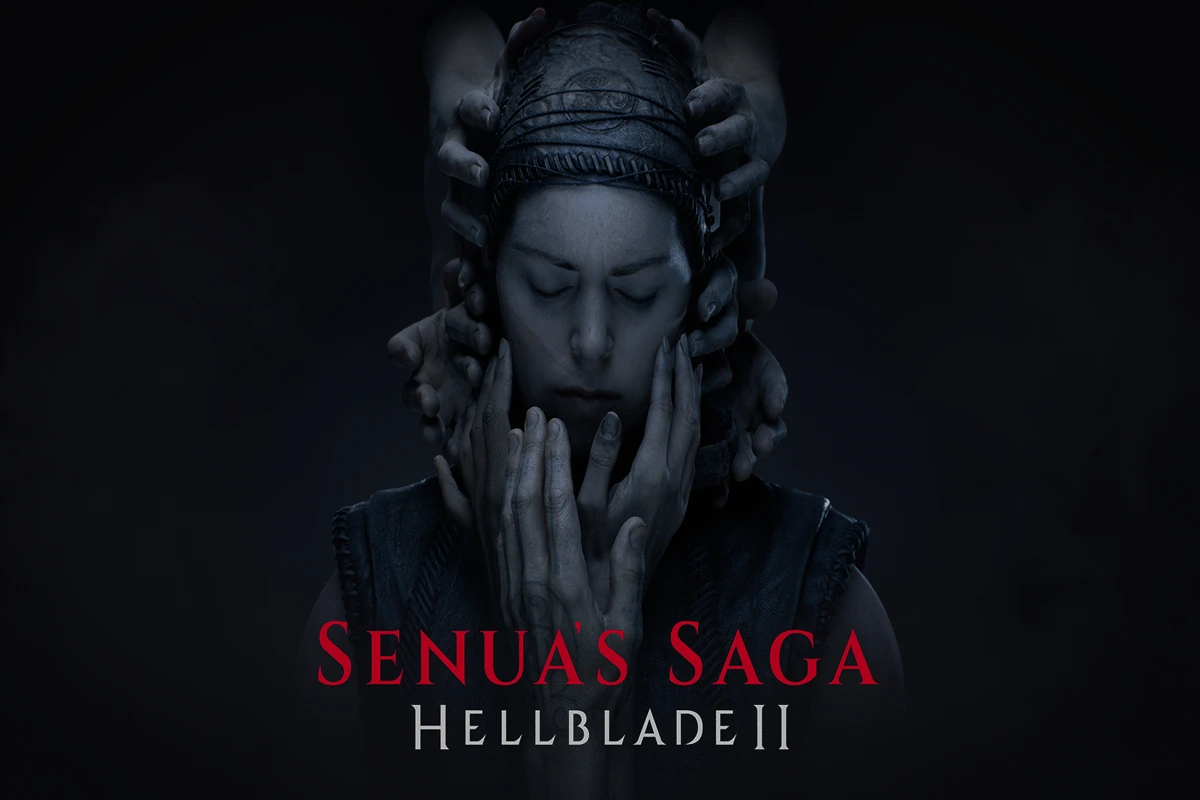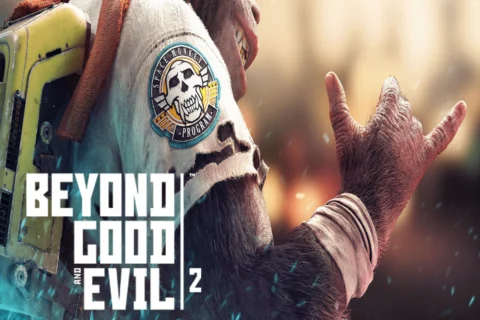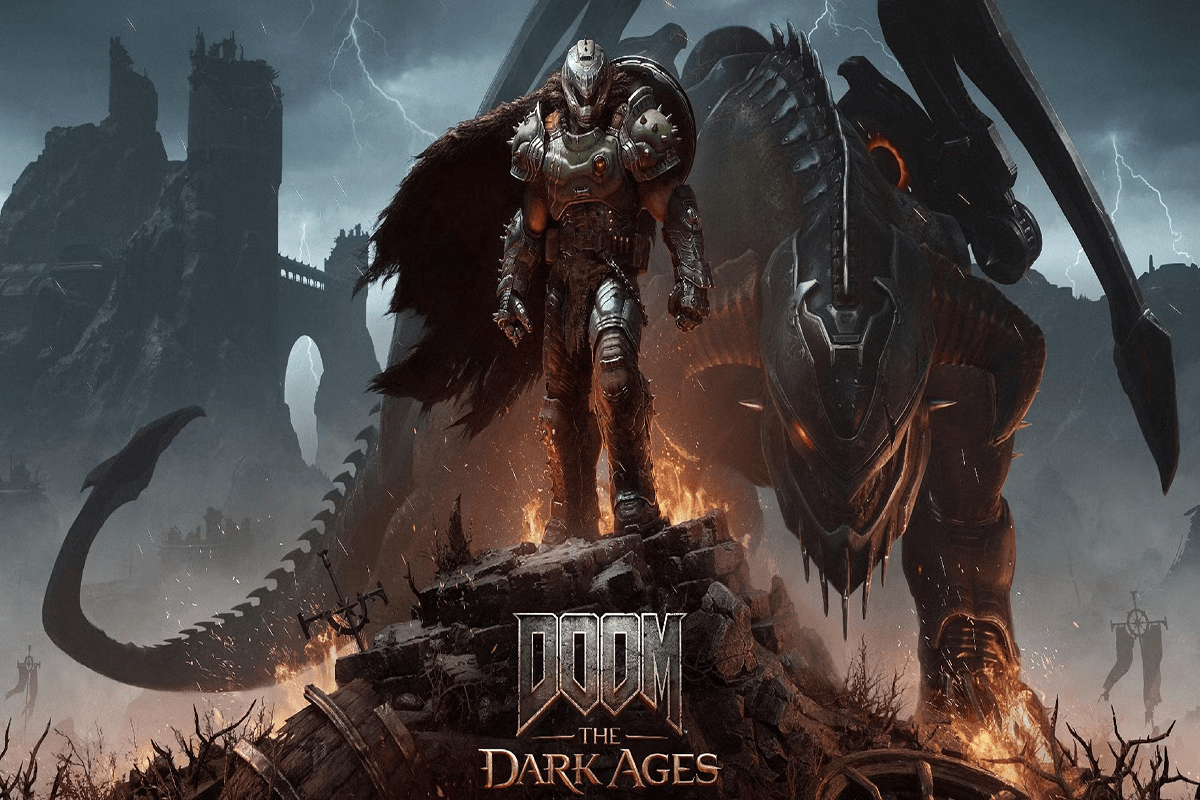A Harrowing Masterpiece of Storytelling and Visual Brilliance
Game Introduction
Senua Saga: Hellblade 2 by Ninja Theory is an awe-inspiring continuation of Hellblade: Senua’s Sacrifice, which received very high critical ratings. Published May 21, 2024, it is a continuing story of Senua, a Celtic warrior fighting against the external enemies and the struggle inside her psychosis. The Hellblade II goes further, trying to capture the legacy of its predecessor, providing a really immersive experience, which combines gory action, touching the story, and the top graphics. Being concerned with the mental wellbeing, Norse mythology, and the cinematic appearance, Hellblade II becomes not only a game but an emotional and sensory experience that breaks the borders of video games as an interactive narrative.
Gameplay: A Refined and Immersive Experience
The gameplay in Senua Saga: Hellblade II is similar to that of its previous version, as it maintains its core elements but still has new mechanics and additions to improve the experience further. It is an adventure game with some exploration and puzzle elements that is combined with combat, and whose interactions are wrapped up in a narrative-driven structure with the main focus on immersion and emotional attachment.
Characters
Senua is still the center of the story, with Melina Juergens showing again a good performance, which is nothing less than extraordinary. She depicts the psychotic struggle of Senua in an authentic and raw way that makes the players dive into the broken mind of a woman. It features new characters, both friends and enemies, with their motivations and relationships to Norse mythology. Such characters make the story more profound and break the illusion of reality that Senua lives in.
Missions and Features
Each of the missions in the game is well-knit into the story so that each chapter of the story develops the character of Senua and simultaneously touches upon the problems of trauma, resilience, and redemption. The battle is more sophisticated than that in the initial game; it is more about timing, precision, and tactics. Combat with the use of a sword is heavy and impressive, and the appearance of new types of enemies is an element that requires adjusting the strategy. A significant part is dedicated to puzzle solving as well, as environmental puzzles are there, asking the players to figure out the special way Senua sees the world.
New traversal mechanics are also added to the game, thus enabling Senua to explore more enormous and diverse areas. Whether it is a claustrophobic cave or wide open fields, every single location is carefully crafted to display the mental state of Senua and address mythological themes of the game.
Story Narrative: A Dark and Poignant Tale
Being a direct sequel to the previous game, Senua in The Saga II: Hellblade sends Senua on another adventure against the objectives of the Norse system and her internal demons. It is a painful journey of the mind, the psychological damage, and the strength of the human spirit.
The story of Senua is carried to the brutal and cruel worlds of Iceland, where the main character confronts new enemies and dangers, both material and spiritual. It is a very personal story, one which explores the past of Senua and her constant battle with psychosis. The voices, whom she calls the Furies, come back, and at once lead her and oppress her. These voices exist continuously to create the impression that it is impossible to tell where reality ends and where the mirage begins, as they surround the players in the mindset of Senua.
The narrative of the game is infected with Norse mythology, as Senua finds herself in the presence of gods, monsters, and beings outside of the natural world. These aspects are incorporated harmoniously in the story and give shades of symbolism and meaning. The language is emotional and compelling, and the themes of loss, redemption, and coming of age can be heard throughout the story.
The Making of Senua’s Saga: Hellblade II – A Deep Dive into Development
The development of the project Senua saga: Hellblade II was an epic work of Ninja Theory, a studio with a reputation for a loyal approach to storytelling, technical solutions, and tangibility of feelings. Having succeeded with Hellblade: Senua’s Sacrifice, the team turned to making a sequel, much improved and at the same time leading the path of what video games can do in the landscape of narration, visual quality, and emotions. So, here is the full process of the production of this outstanding game.
A Vision Rooted in Authenticity and Innovation
The primary idea behind Ninja Theory was to develop a game that would be technically impressive and highly personal. The vision of the studio was to deepen the topics of mental wellbeing and mythology of the Norse world, alongside providing a richer and filmic experience with Hellblade II. To accomplish this, the team has adopted the latest technology, consulted with highly qualified persons, and undertaken a lot of research in order to make each part of the game seem real and meaningful.
Leveraging Unreal Engine 5
The evolution of Hellblade II relates to one of the most significant additions, which is the usage of Unreal Engine 5 that enabled the creation of a visually stunning and very detailed world. The features of the engine, like Nanite, which is used to render the super-detailed geometry, and Lumen, used to produce dynamic global lighting, have allowed the team to build the environments and people as realistic as they have ever seen before.
The Icelandic-like scenery in the game, where the mountains of volcanic plains and fjords made of ice are involved, was assembled by means of photogrammetry, which is the process of photographing the real world and transforming it into a video game. This way, the technique allowed each rock, cliff, and waterfall to be grounded. Motion capture was heavily deployed by the team so as to represent characters alive, and Melina Juergens returned to her role as Senua to provide a rough yet heartfelt performance.
A Commitment to Mental Health Representation
At the center of Hellblade II is its presentation of Senua, who is in a state of psychosis, to which Ninja Theory dedicated a lot of thought and attention. In collaboration with mental health experts, neuroscientists, and individuals who themselves live with psychosis, the studio created a very accurate and empathetic representation of psychosis. This partnership affected the development of everything, including the story of the game to the soundscape, so there is no doubt that the journey of Senua was real and relatable.
The Furies are the voices that Senua hears in her head and are key to narrating the game. Ninja Theory employed the use of binaural audio technology in order to produce these voices, which simulate 3D soundscapes so that players are made to believe that the voices are all around them. This method, together with writing and acting out scenes by the Furie,s puts a player into the world of Senua and emphasizes how complicated her experience is.
Research and World-Building
To bring to the world a feeling of this mythic-familiar circle, Ninja Theory carried out much research on Norse mythology and Icelandic culture. The crew visited Iceland to see the scenery, structures, and folklore, to get inspired by the desolate beauty and the history of the nation. This paper affected even the settings of the game, which are not only impressive yet frightening, and they help to represent the mind of Senua and the concentration of the game on fighting and struggle.
The plot of the game is founded on Norse mythology to the point where Senua encounters supernatural beings, monsters, and gods. These are elaborated into the story in an extremely natural and inspired way, establishing a layer of symbolic stories and meaning. The crew also relied on the Icelandic legends and Icelandic sagas in order to establish a historically inhabitable world.
Refining Gameplay and Mechanics
Although Hellblade II shares most of its gameplay features with the previous title, there are notable improvements and additional mechanics added by Ninja Theory so that the experience could be even richer. There is a complete overhaul of combat, for instance, making it feel more real and effective. The movements of Senua are fluent and accurate; they are all about timing, strategy, and versatility. There are new types of enemies and boss fights, and they place an emphasis on young people to be close to their thoughts and learn the tricks of Sarah.
Puzzle-solving is also an important feature of the gameplay, as there are environmental puzzles that require the player to investigate the unusual vision Senua developed of the world around her. These puzzles are imperceptibly ingrained into the plot and contribute to the immersion and the feeling of exploration in the game. A group of new traversal mechanics was also added, providing Senua with the ability to traverse more diverse environments.
Sound Design and Music
Sound design is also an essential aspect of the Hellblade II game, and the audio breaks even in terms of importance with the visuals. The music in the film was collaborated with Heilung, a band of experimental and atmospheric music, to come up with haunting and evocative music. The music is a fusion of the traditional Nordic instruments and modern tools of production that entails an antique and indefinite sound setting.
What is especially interesting about the game is its application of binaural audio technology, which provides a 3D sound field, submerging people in the world of Senua. The excitement of the Furies, rustling of the leaves, and sounds of the far-gone battles all complete the game atmosphere and emotional state.
A Labor of Love and Passion
Senua Saga: Hellblade II is a passion project by Ninja Theory, so each employee invested his or her energy and imagination into development. The effort put in by the writers and artists, programmers and sound designers was as important as the other since all of them contributed to providing life to Senua and her story. What can be the outcome? A game that can be called not only a technical and artistic success, but a truly moving and thinking experience.
Graphics and Sound: A Cinematic Masterpiece
Senua Saga: Hellblade II is a masterpiece drop because of its graphics and sounds that establish a new level of representation in video games. The game’s graphical fidelity is simply jaw-dropping, having hyper-realistic models of characters, composited lighting, and the detailing of the surroundings is amazing. Unreal Engine 5 permits the visual effect of being stunning, including realistic water, weather, and particle systems.
Sound design is also top-notch, and the haunting score is composed by Heilung, a band that makes experimental and atmospheric music. Audio is a significant part of the immersiveness of the game, and because the Furies are always whispering, shouting something, and giving directions to Senua, this feature is a part of the game. It brings in binaural audio technology to give them a 3D sound, so players are convinced that the voices appear to be coming from everywhere around the field.
Replayability and Content
Although the entire experience of Hellblade II can mainly be characterized as a narrative-based journey, there are enough situations that can prompt one to return to the world. It has several endings that prompt the players to make alternative decisions and interpretations in the game. Secret collectibles and lore pieces help you find more context and depth, and you will be rewarded with those who are high-class explorers.
The duration of the game is similar to its precursor, and the linear episode can be finished in approximately 8-10 hours. Still, the emotional and cinematic nature of the experience renders it extremely significant. In case one is interested in a more severe challenge, advanced levels of difficulty as well as normal modes of battling can be adopted.
Verdict
Senua Saga: Hellblade II is a masterpiece and better in all aspects when compared to the first one. With its narrative energy, masterful gameplay, and cinematic elements, it is one of the most thrilling games of 2024.
The Good
- Stunning visuals and cutting-edge graphics
- Immersive sound design and haunting score
- Powerful and authentic portrayal of mental health
- Refined combat and puzzle-solving mechanics
- Emotional and thought-provoking narrative
The Bad
- Relatively short playtime for some players
- Heavy focus on narrative may not appeal to everyone
Genre and Platforms
This is an action-adventure psychological horror game titled Senua Saga: Hellblade II. It releases on Xbox Series X/S and PC, although it will not be available on the Xbox One and PlayStation 4, which guarantees that the game will make use of the capabilities of newer machines. The game, published May 21, 2024, by Xbox Game Studios and developed by Ninja Theory, has been hailed as one of the technical and emotional achievements in the genre, with no second thoughts that it was an iconic entry in the field.
Senua’s Saga: Hellblade II System Requirements
Minimum
- OS: Windows 10/11 64-Bit
- Processor: Intel i5-8400 | AMD Ryzen 5 2600
- Memory: 16 GB RAM
- Graphics: Nvidia GTX 1070 | AMD RX 5700 | Intel Arc A580
- Storage: 70 GB available space
- Additional Notes: SSD Required
Recommended
- Requires a 64-bit processor and operating system
- OS: Windows 10/11 64-Bit
- Processor: Intel i7-10700K | AMD Ryzen 5 5600X
- Memory: 16 GB RAM
- Graphics: Nvidia RTX 3080 | AMD RX 6800 XT | Intel Arc A770
- Storage: 70 GB available space
- Additional Notes: SSD Required









